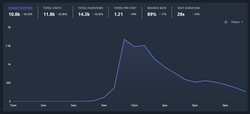About Me
I’m a Dad, Husband, and DevOps Architect. By day, I teach customers how to run production cloud platforms using SRE principles and a “platform as a product” mindset. By night - or at least, for a few hours after my Daughter has gone to bed - I’m a musician, geek and writer. This site is a home for all my projects and random musings, if any of them interest you I’d love to hear from you!
History
As this site and it’s predecessor have been online since the late 90s, I’ve seen tech trends come and go and have worked on some really fun stuff. Thanks to the wonderful archive.org, I’ve managed to go back through the years and build up a timeline of all the different technology eras. It’s kind of a “Website CV”, starting from my first dabblings in hand-crafted HTML to the modern cloud-native world. It’s brought back a lot of memories as well as some decidedly cringy photos and website design…
The paleolithic era

I built the whole thing using AOL Press and it was as clunky as you’d expect for the era! Unfortunately (or fortunately, depending on your point of view) no usable archives of this exist, the earliest nearly-complete captures I have of the site are when I registered markround.com and set up a PHP-Nuke (remember that?) based site on a shared-hosting LAMP stack.
The site did reasonably well for an early internet project and attracted a small crowd of regulars and guest contributors before I eventually shuttered it due to lack of time, as by then I had started working full-time as a Unix sysadmin/Webmaster/Java developer and the heady days of university were behind me.
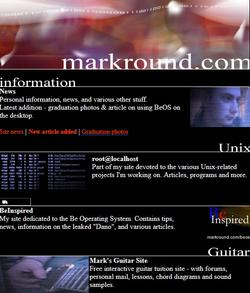
root@localhost
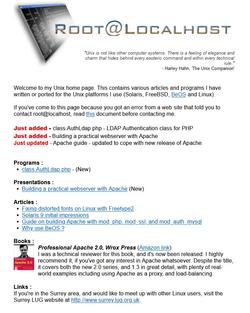
One hilarious side-effect of having a site that at the time ranked very highly when you searched for “root@localhost” was that I ended up getting a ton of emails from people I’d never heard of asking for help with random error messages. The default contact email address shown on error pages for the Apache webserver was root@localhost. Lots of sites back then didn’t bother to change the defaults, so when Joe Random saw a page-not-found error on a website, they saw contact root@localhost for support, would chuck that into Google and land on my page. I had to include a “really, I have nothing to do with this, and no I did not break your webserver” page to explain it all.
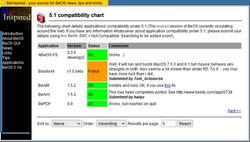
Digital Badger
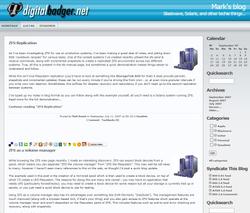
This website was by then on it’s way to a well-established blog, so I’d switched from hand-written HTML in Dreamweaver to a series of dynamic backends again using the then-standard LAMP stack. I eventually ended up settling on Serendipity, which remained the engine behind the site for many years. During that time it followed the trends of the day: I went through many Linux distributions from CentOS to Debian to Ubuntu when that became A Thing; PHP and MySQL upgrades; caching layers, and also a few different webservers including Lighttpd. It was hosted on a series of Solaris and then Linux servers, eventually becoming virtualised on Xen, and then moved into the cloud.
I also joined the now-defunct Blastwave.org project around 2003. This was a community effort that built packages for Solaris systems similar to e.g. a Debian APT repository. That was a big deal back then as the ancient SysV packaging system on Solaris was horrible, with no dependency resolution or proper integration with Sun’s patching system. We were pretty much the “go-to” site for Solaris open-source software at the time. My blog covered updates on the packages I maintained: PHP, PostgreSQL, Nessus and a few others. Sadly, internal politics and Major Internet Drama™ led me to drop out in 2008. A lot of the maintainers (hey guys!) did move over to the new OpenCSW project though, which still seems to be kinda going. But by that point the writing was on the wall for Solaris, and I’d moved on to pretty much 100% Linux and BSD by then.
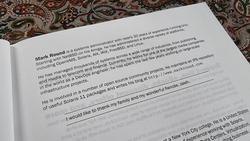
The Age Of Enlightenment
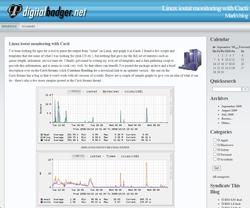
Modern Civilisation
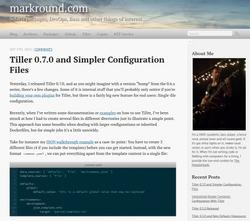
Anyway, Docker was now the hot new thing (although Kubernetes was just barely out of being a new research project and anyone serious would be using Mesosphere). While this site was by then running happily under docker-compose, I’d started to have a few issues moving non cloud-native software into a containerised world - old in-house or 3rd party applications that were the very antithesis of 12-Factor apps. And back then, you weren’t always guaranteed to find a convenient image for your open-source package of choice, either.
So I wrote Tiller. And that project really took off! It’s admittedly small fry in the terms of open source projects and is pretty much stalled at the moment but it’s still managed to (at the time of writing) hit 244,360 downloads from RubyGems, acquire 320 Github stars, have 11 pull requests from other developers merged, and over 2,000 lines of documentation written plus it’s pretty much all I blogged about then.
It’s also the period when my music really started picking up. I started gigging again and produced my first few tracks. That photo of me on the sidebar is from my first gig with my friends when I lived in Surrey. Good memories.
AMIGAAAAAAA
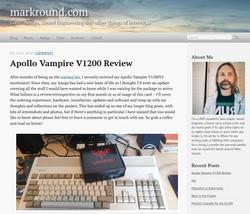
As well as a bunch of more technical articles on the next-gen AmigaOS 4, I also ended up re-learning C and wrote a system utility called SetCmd which is now being ported across to the classic 68k-powered Amiga OS. And something really cool happened as well with my music, too. I made a rock cover of an ald Amiga demo tune, and it ended up getting shown at a demo conference!
The Current Day
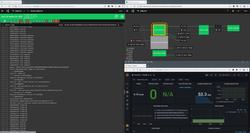
This site is now managed and deployed in the same kind of way I now teach my customers: The website and infrastructure is all expressed as code and generally runs through Drone CI pipelines that run Terraform tasks, deploy containers using Helm, FluxCD and so on. It’s all hooked up to a CI/CD set of pipelines that build the containers that make up this site, so all I have to do to publish a post now is make a git commit, or push a branch to production. Everything is running on a cloud-hosted Kubernetes cluster with the currently “trendy” stack of ELK/Prometheus/Grafana/Traefik/NginX etc.
The whole thing including control plane, networking and monitoring can be torn down and recreated in minutes with a single click. Even the old Solaris die-hard in me has to admit this is just awesome and despite the challenges of the current cloud-native IT world, it sure beats hand-rolling mod_perl clusters!
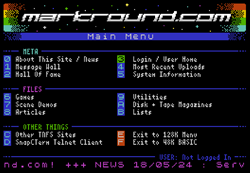
It was another very enjoyable trip into computing days gone by - and as a nice bonus, while I was creating the website for the TNFS Site, I ended up learning Jekyll 4 and decided to port my old blog across again, hence the current spring-clean and new content. So it’s now something like the 10th code base in it’s lifetime. I wonder what it’ll look like in another 20 years time ?
